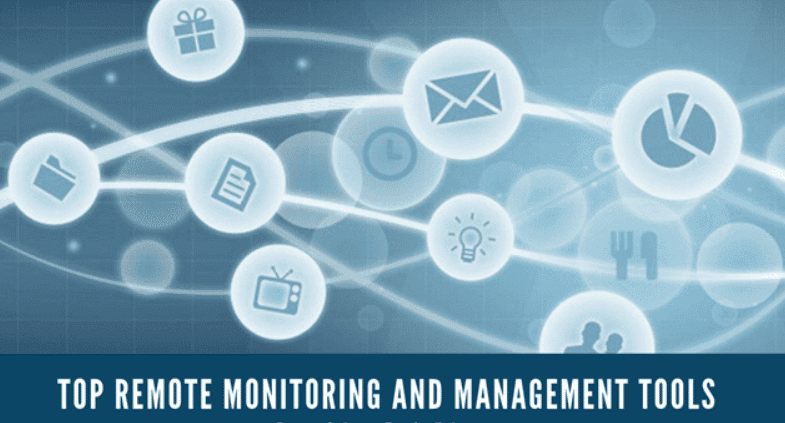In today’s dynamic business landscape, remote work has become more prevalent than ever before. With this shift, the need for robust Remote Monitoring and Management (RMM) solutions has skyrocketed. RMM software empowers organizations to efficiently oversee and control their IT infrastructure from anywhere, ensuring seamless operations and optimal performance. Let’s delve into the world of RMM software and uncover its profound impact on modern businesses.
Understanding RMM Software
Remote Monitoring and Management (RMM) software serves as a comprehensive toolkit for IT professionals, enabling them to monitor, manage, and maintain distributed IT systems remotely. From endpoint monitoring to software patching, RMM software encompasses a wide array of functionalities aimed at optimizing network performance and security.
RMM solutions typically include features such as automated alerts, remote desktop access, patch management, antivirus management, and reporting capabilities. These tools provide IT teams with real-time insights into network health, allowing them to proactively identify and address potential issues before they escalate.
The Evolution of Remote Management

With the rapid evolution of technology and the increasing complexity of IT environments, traditional management approaches have become obsolete. Manual processes and on-premises solutions are no longer sufficient to meet the demands of modern businesses operating in a dispersed work environment.
RMM software represents a paradigm shift in remote management, offering a centralized platform for monitoring and controlling diverse IT assets across geographically dispersed locations. By leveraging automation and cloud-based technologies, RMM software streamlines IT operations, enhances security posture, and facilitates scalability.
Key Benefits of RMM Software
1. Enhanced Efficiency and Productivity
RMM software automates routine tasks such as system updates, maintenance activities, and troubleshooting, freeing up IT staff to focus on strategic initiatives. By eliminating manual intervention and reducing downtime, RMM solutions boost operational efficiency and productivity.
2. Proactive Monitoring and Issue Resolution
By continuously monitoring network endpoints and infrastructure components, RMM software enables proactive identification of potential issues. Automated alerts and notifications empower IT teams to address problems swiftly, minimizing disruption and ensuring uninterrupted business operations.
3. Improved Security Posture
Security threats are a constant concern for businesses in the digital age. RMM software strengthens cybersecurity defenses by enforcing compliance policies, deploying security patches promptly, and detecting and mitigating security vulnerabilities in real-time.
4. Scalability and Flexibility
As organizations grow and evolve, their IT requirements change accordingly. RMM software offers scalability and flexibility to adapt to evolving business needs, whether it’s adding new devices, expanding into new locations, or integrating with third-party applications.
5. Cost Savings
By automating routine tasks and optimizing resource utilization, RMM software helps organizations reduce operational costs and achieve a higher return on investment (ROI). The ability to manage IT infrastructure remotely also eliminates the need for onsite support, further lowering expenses.
FAQs (Frequently Asked Questions)
Q: What is RMM software? A: RMM (Remote Monitoring and Management) software is a comprehensive solution used by IT professionals to remotely monitor, manage, and maintain IT systems and infrastructure.
Q: How does RMM software enhance security? A: RMM software enhances security by enforcing compliance policies, deploying security patches promptly, and detecting and mitigating security vulnerabilities in real-time.
Q: Can RMM software help improve productivity? A: Yes, RMM software automates routine tasks, reduces downtime, and empowers IT teams to focus on strategic initiatives, thereby enhancing productivity.
Q: Is RMM software suitable for small businesses? A: Absolutely! RMM software offers scalability and flexibility, making it suitable for businesses of all sizes, from startups to enterprises.
Q: What features does RMM software typically include? A: RMM software includes features such as automated alerts, remote desktop access, patch management, antivirus management, and reporting capabilities.
Q: How does RMM software contribute to cost savings? A: By automating tasks, optimizing resource utilization, and reducing downtime, RMM software helps organizations lower operational costs and achieve a higher return on investment (ROI).
Implementing RMM Software: Best Practices
Assessing Organizational Needs
Before selecting an RMM solution, it’s crucial to conduct a thorough assessment of your organization’s IT requirements, budget constraints, and desired outcomes. Identify key pain points, security concerns, and operational challenges to ensure that the chosen RMM software aligns with your objectives.
Evaluating Features and Functionality
Not all RMM solutions are created equal. Take the time to evaluate the features and functionality offered by different vendors. Look for essential capabilities such as remote monitoring, patch management, automation workflows, and integration options with third-party tools.
Considering Scalability and Integration
As your business grows, your IT infrastructure will inevitably expand. Choose an RMM software that offers scalability and seamless integration with existing systems and applications. This ensures that your remote management solution can accommodate future growth and evolving technology requirements.
Training and Onboarding
Effective implementation of RMM software requires proper training and onboarding for IT staff. Invest in comprehensive training programs to familiarize team members with the features, workflows, and best practices associated with the new system. This will enable them to maximize the benefits of the RMM solution and minimize disruptions during the transition period.
Continuous Monitoring and Optimization
Once the RMM software is deployed, it’s essential to establish regular monitoring and optimization routines. Monitor key performance metrics, security alerts, and system health indicators to identify areas for improvement and optimization. Regularly review and update your RMM strategies to adapt to changing business needs and emerging threats.
Leveraging Vendor Support and Resources
Take advantage of vendor support services, online resources, and community forums to enhance your RMM software experience. Engage with vendor representatives, attend training webinars, and participate in user forums to stay informed about product updates, best practices, and industry trends.
Conclusion
In conclusion, RMM software is a game-changer for businesses seeking to streamline remote management processes, enhance security, and drive productivity. By leveraging the power of automation and real-time monitoring, RMM solutions empower organizations to stay agile, resilient, and competitive in today’s digital landscape.